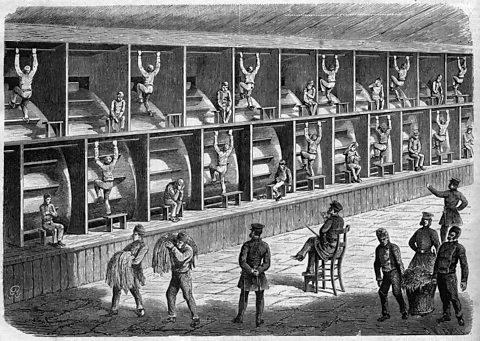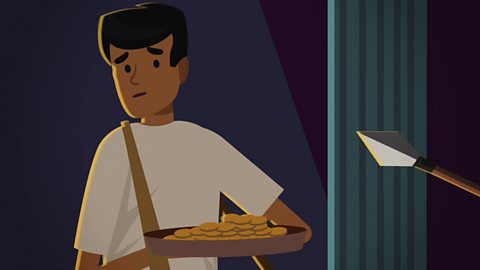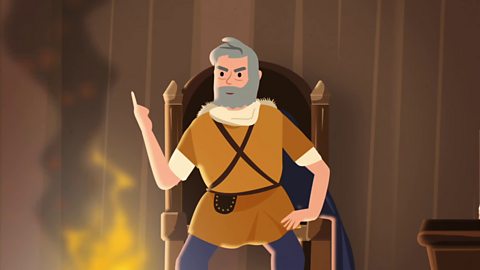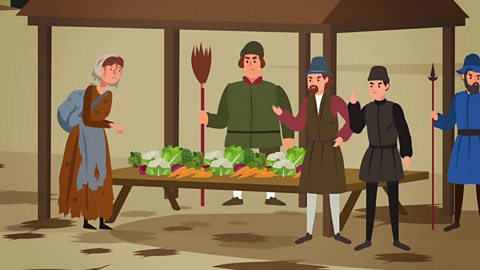Watch: Punishing crimes in Victorian Britain
Watch this video to find out how crime was punished in Britain during Victorian times.
MUSIC
DOOR CLICKS
Man: What’s going on? Filthy beggars, stealing from us! Fetch the police!
BARS SLAM
PEN SQUEAKS
Judge: Stealing is a very serious crime. Up until a few years ago, it was punishable by death. How do you plead?
Boy: Sir, we was just trying to get some shoes for the cold winter ahead.
Girl: We’ve been living on the streets since we was young.
Judge: I’ll take that as a guilty plea then.
I should sentence you to death, but you’re both fit and young so we’ll get some hard work out of you. I sentence you both to hard labour in New South Wales.
Boy: Wales?
Judge: New South Wales is in Australia. The long journey will give you time to think about your crimes. Take them to the transportation ships.
SEAGULLS SQUAWK
Life in Victorian Britain

- The Victorian period in Britain was between 1837 and 1901.
- In the Victorian period the population increased and many people began to move from the countryside to the towns and cities to work in factories.
- Living conditions were often cramped with one family per room and the whole street would share an outside toilet and a water tap.
- There was a great divide between the rich and poor.
- The fear of crime was made worse by cheap books called penny dreadfuls. These stories set out to shock readers with details of horrible crimes.
- If a child committed a crime they received the same punishment as an adult.
Was there a police force?

- In 1829, a politician called Sir Robert Peel introduced the first English police force in order to improve public order in London. Over the next ten years, many other areas of the country formed their own police force.
- Policemen were poorly paid and they would patrol a certain area, known as their beat.
- Policemen carried truncheons and rattles to raise the alarm.
- Many people did not trust the new police force. However, over time, the police proved they could reduce crime and so they became more trusted and popular.
Victorian punishments were very strict

- For the first time, prisons became the main punishment in this period.
- Transportation: Many criminals were sent to Australia for hard labour.
- Prison hulks were ships that moored in the harbour and housed criminals to be transported or taken to court.
- Hard labour was a common punishment.
- The crank and the treadmill: Prisons often made prisoners do pointless tasks such as turn a crank up to 10,000 times a day. Or walk for hours on giant circular tread mills.
- In 1854, Reformatory Schools were started for young offenders.
- Other punishment included fines, hanging or being sent to join the army.

Activities
Activity 1: Victorian crime quiz
Bitesize Primary games. gameBitesize Primary games
Play fun and educational primary games in science, maths, English, history, geography, art, computing and modern languages.

More on Crime and punishment
Find out more by working through a topic
- count1 of 10

- count2 of 10

- count3 of 10
